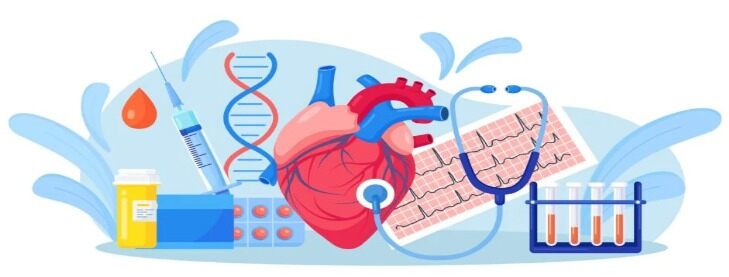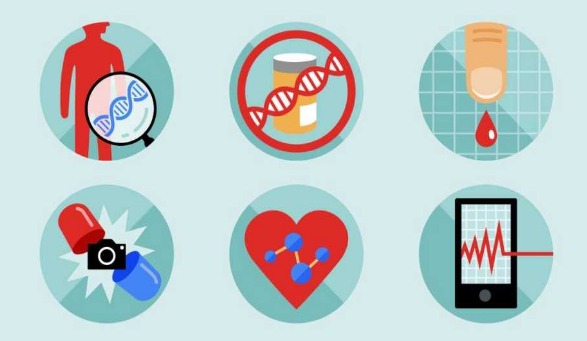A heart attack medically known as Myocardial infarction is a cardiovascular disease. It is a deadly emergency that requires immediate attention when a blood clot blocks the blood flow to the heart damaging the heart muscle. In such cases, the tissues lose the oxygen and die. Traditionally heart attacks were more commonly associated with older ages. But nowadays the scenario has become much more complicated.
There has been a surge in the cases of young adults dying from heart attacks. It has become common to have it in the early 20s or 30s. Several factors from a sedentary lifestyle to a poor diet and stress have been the biggest contributors to this deadly trend.
Lifestyle factors and early onset
The fast-forward lifestyle of the current generation has put them in a more dangerous spot. With the advent of ready-to-eat food and fancy diets, adults have been crazy followers of all this. Several lifestyle factors have contributed to the early onset of heart attacks:
- Poor diet: The predominance of fast foods, processed meals, and sugary beverages that are high in saturated fats and cholesterol has led to the development of cardiovascular disease.
- Lack of physical activity: Urbanization and modernisation have initiated a sedentary lifestyle characterized by long hours of sitting, limited physical activity and increased consumption of unhealthy foods.
- Smoking and excessive alcohol consumption: Increased work-life imbalance and stress can lead to unhealthy coping mechanisms such as smoking and excessive alcohol consumption.
- Obesity; Being overweight or obese due to limited physical activity is a contributory factor to heart disease.
- Diabetes and hypertension: The rising sift in hypertension and diabetes among younger people has significantly elevated the risk of heart attacks.
- Ignorance of symptoms and delayed medical attention: Adults assume that they are too young for a risk. Due to these misconceptions, they ignore the symptoms and find it irrelevant to take any medical advice.
Genetic predisposition to early heart attack
If there is a family history of heart disease, especially if close relatives have experienced heart attacks at a younger age, it may indicate a genetic predisposition. Especially individuals with a first-degree relative (parent or sibling) who has a heart attack then the individual may have a higher risk due to shared genetic factors.
On the other hand, some genetic conditions are inherited like hypercholesterolemia which leads to an early age risk of premature heart disease. Genetic mutations have also been linked to an increased risk of cardiovascular disease, potentially contributing to heart attacks.

Psychological stress and its role
Chronic stress has been directly associated with various psychological changes that may contribute to heart attacks. Psychological stress plays a significant role in the development of heart issues among young people. They include;
- Due to increased blood pressure, a “flight or fight” response is activated and it elevates the blood pressure straining the cardiovascular system.
- Prolonged stress can contribute to inflammation in the body, including the arteries, which increases the risk of heart attacks.
- Stress hormones may affect blood clotting mechanisms, potentially increasing the risk of clot formation, which can lead to heart attacks.
- Stress hormones like cortisol and adrenaline can impact the balance of other hormones in the body potentially contributing to cardiovascular disease.
- Chronic stress can disrupt sleep patterns and one can suffer from insomnia. Poor quality sleep is linked to an increased risk of heart problems.
- Chronic stress also triggers mental health problems such as anxiety and depression.
Gender disparities in young heart attack patients
Genetic factors can affect men and women differently in terms of heart attacks. However, there are other significant contributing factors as well. The age of onset is different in both genders. Men are likely to experience heart attacks at a more young age and women’s risk increases more after menopause.
Conditions like polycystic ovary syndrome(PCOS) in women and low testosterone in men can also be a contributing factor. Symptoms represented by both genders are different. Women exhibit more atypical symptoms like nausea, shortness of breath, and fatigue compared to the typical symptoms such as chest pain displayed by men. This leads to delayed recognition and treatment.
Innovations in diagnostic tools
With technological advancements, the medical sector has gained a lot. In recent years, there has been the innovation of various significant diagnostic tools for cardiovascular disease. High-sensitivity cardiac biomarkers can detect the cardiac troponin at extremely low levels and allow for early and precise diagnosis of heart attacks.
Techniques like Cardiac magnetic resonance imaging(MRI) and computed tomography angiography(CTA) provide detailed images of the heart aiding in further diagnosis. Artificial intelligence and machine learning provide an efficient interpretation of results for conditions like coronary heart disease.
Advances in Electrocardiogram (ECG), such as portable monitoring devices have offered improved detection of arrhythmias and other cardiac abnormalities.

Educational initiatives for heart health awareness
Educational initiatives provide a multifaceted approach to creating heart health awareness among youth as well as the older generation. With public awareness campaigns, clear messages and engaging visuals can help to communicate the importance of heart health. Collaboration with educational institutes to include topics such as nutrition, exercise etc in the curriculum is a great step towards spreading knowledge on cardiovascular disease.
Establishing workplace wellness programmes, online courses webinars and other resources helps to reach a wide audience. Providing practical information in community workshops on the prevention of heart diseases and maintaining cardiovascular health creates an impact on the target audience. The creation of interactive mobile apps that offer personalized health tips, interactive content and constant reminders to maintain a heart-healthy lifestyle seems engaging.
Conclusion
Cardiovascular disease especially heart attacks requires awareness among the affected patients and the unaffected ones too. Heart health is a vital endeavour that requires a combination of targeted educational initiatives, community management, and collaboration with healthcare professionals.
Younger generations are the future of society but the efforts made should be inclusive, considering the needs of different age groups and diverse communities. Individual needs to be aware of their choices that contribute towards the damage to their cardiovascular health.
The world is moving fast. With the greatest technological achievements and modernisation, individuals have forgotten the true essence of life which lies in maintaining a balanced healthy life. After It is not about how long we lived, it’s about how happily we lived till our lifetime
-TANYA SHAH
MUST READ: MENSTRUAL LEAVE: A PROGRESSIVE STEP TOWARDS WOMEN’S HEALTH AND WORKPLACE EQUALITY





